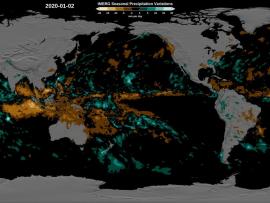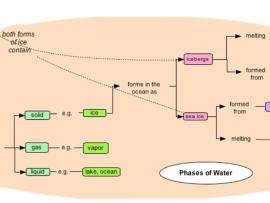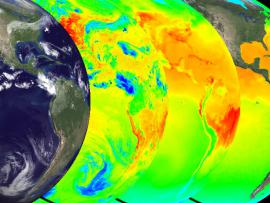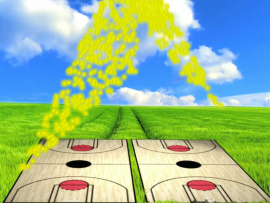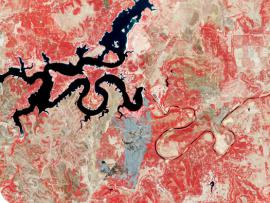Search
Primary tabs
Search
Your search for "Precipitation" gave back 163 results.
Primary Topic:
Subtopics:
Type:
Standards:
Keywords:
Summary:
The water cycle may seem simple on the surface, but there are many different ways to move through the process. This page has a few different versions of a Water Cycle Dice game to teach students about the complexities of water in Earth's system.
Primary Topic:
Subtopics:
Type:
Keywords:
Summary:
This month's NASA Earth Explorer explains what it's like to be face-to-face with one of nature's most powerful storms.
Primary Topic:
Subtopics:
Type:
Keywords:
Summary:
This short animation from the Community Collaborative Rain Hail and Snow Network shows how decision makers use a variety of data and in-person reports to assess the drought conditions across the United States.
Primary Topic:
Subtopics:
Type:
Summary:
A collection of resources exploring how NASA satellites like GPM can help monitor and predict Earth's climate.
Primary Topic:
Type:
Audience:
Keywords:
Summary:
This lesson is primarily for elementary school teachers who are looking for a hands-on inquiry based activity to teach their students about evaporation.
Primary Topic:
Subtopics:
Type:
Keywords:
Summary:
Explore the solar heating of the ocean in part one of a series on the water cycle. The animations show multiple views of the solar heating of the oceans, a picture of this first stage of water's cyclical journey from sea to air to land, and back again.
Primary Topic:
Subtopics:
Type:
Standards:
Keywords:
Summary:
A simple illustrative comparison of the number of rain gauges active worldwide.
Primary Topic:
Subtopics:
Type:
Keywords:
Summary:
GPM Application Science Lead, Dr. Dalia Kirschbaum, explains how landslides and floods occur, and how satellite imagery is used in understanding these disasters.
Primary Topic:
Subtopics:
Type:
Standards:
Summary:
This problem-based learning module takes students through a real-world scenario drought in Texas and has them use satellite images and other actual data to answer questions about how Texas and other states should respond to the situation.
Primary Topic:
Type:
Summary:
Home page for the Weather and Climate topic.





